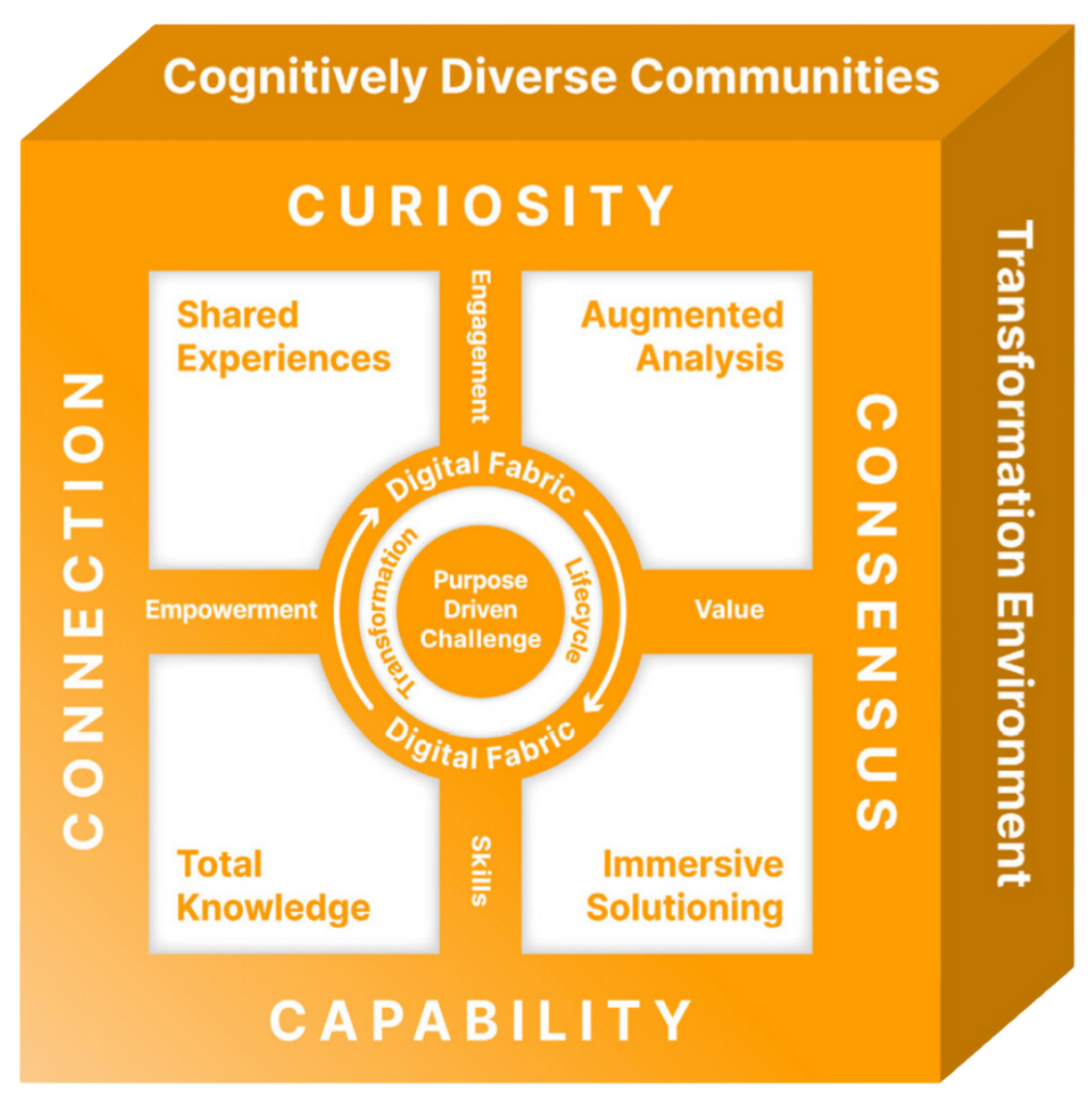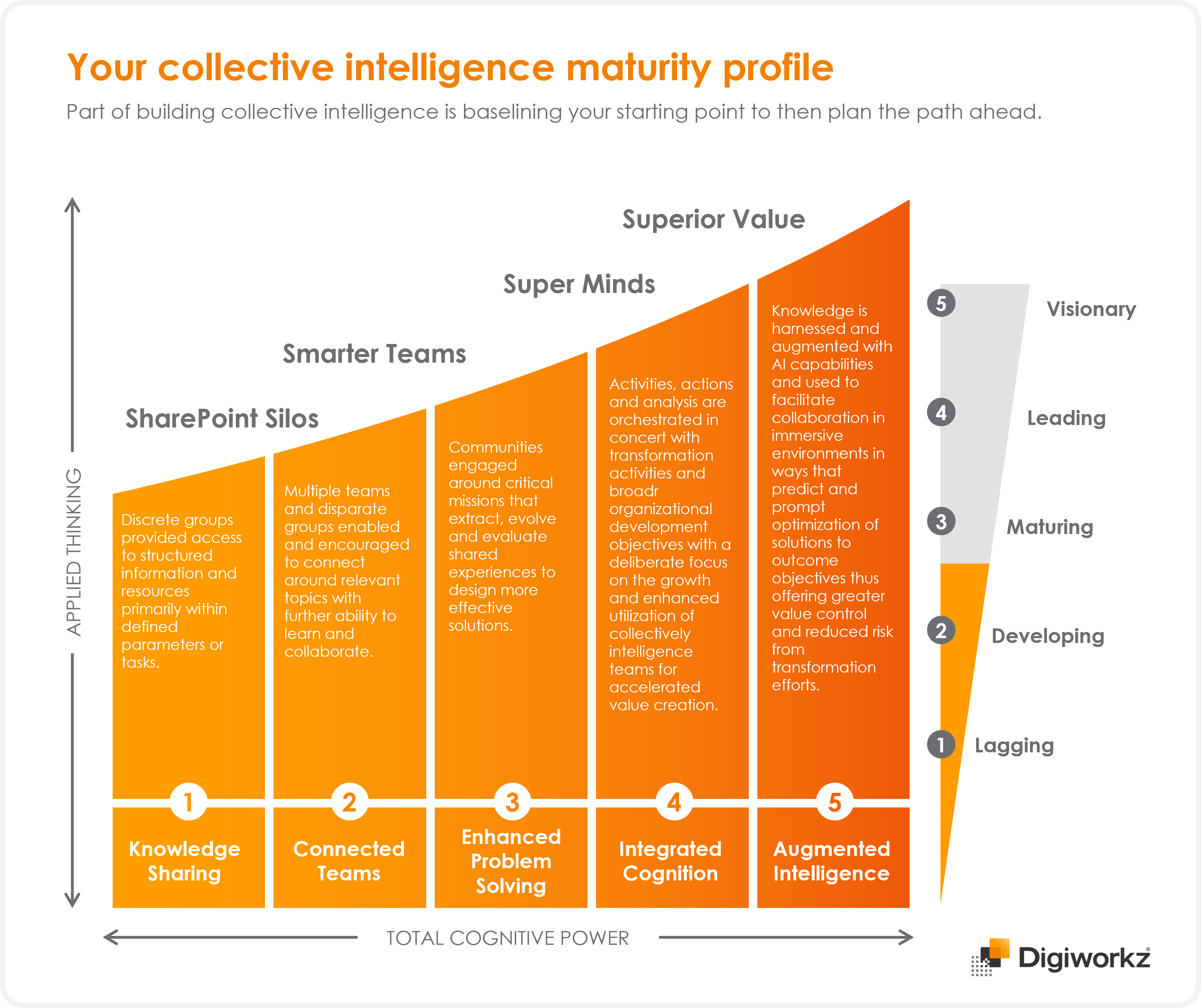Microlearning Programme Soft Skills: Gift or Guff
What's your soft skills strategy? Chances are your programme doesn't have one and it will likely be to the detriment of your value objectives. Check...

Ever wondered why some transformation teams fly and others flounder? In this week's issue of the Tackling Transformation Series, we explore a very new and exciting concept for delivering more successful outcomes. Collective Intelligence is a fast-emerging area of scientific study that's recently been supercharged by the growing maturity of AI technologies.
Don't miss out – follow us on Linkedin for more insightful content and be part of the conversation!
Ah, school days. The best days of your life, they say. Well, not if you had to endure the Monday morning mid-winter PE lessons from hell. Picture this: you’re standing on a waterlogged, grass-stripped excuse for a pitch, facing into a force 9 gale and waiting for that week's match to begin. You know the drill. The sort of conditions that made you wish you were stranded on a desert island eating locust with Bear Grills instead. No? Well, maybe then you’ve also blocked out the trauma of the pre-game picking ritual, where the teacher’s two favourites got to choose their teams from the rest of us socially and or skill impaired losers. Talk about a self-esteem killer. If you can think of a more cruel and unfair way of making selection decisions (other than internal promotion decisions at work, of course), I’m all ears.
But let’s get back to the game for a moment, and what usually happened next. Instead of having two evenly matched teams based on individual talent, we ended up with the PE version of Real Madrid versus Shrewsbury Town. But hold on, think harder. Do you also remember how, every now and then, the team of misfits would pull off a miraculous win and wipe the smug grins off the faces of the mini Olympians. Yeah, that was awesome. On those days, the school lunch tasted like a banquet fit for kings. But how did they do it? Was it just luck?
And this paradigm prevails today. I call it the power of collectivism. In fact, it underpins one of the latest concepts for building winning transformation teams. It is the notion that a group that thinks, operates and learns as a collective will outperform a team of perceived talented individuals. It is certainly not luck.
Whether it is a colony of ants, or a bunch of people cajoled into joining a business transformation programme, this notion that some groups somehow manage to transcend the limits of personal capability to outperform all expectations as a collective has attracted scientific scrutiny.
One of the pioneers of CI research is Anita Woolley, a professor at Carnegie Mellon University. She and her colleagues developed a way to measure the collective intelligence of groups, which they found to be predictive of their future performance across different tasks. They also identified some factors that influence CI, such as the diversity of skills, the social sensitivity of members, and the gender composition of groups.
So, we’ve all heard the mantra that if you want a successful programme then make sure you get the A team, but is this no longer about finding the biggest brains in the room. Is it actually about moulding your team of B listers into a group that have a higher Collective Intelligence than their naturally more IQ gifted A star colleagues?
Despite the growing evidence of Collective Intelligence (CI), it has not entered the mainstream of management thinking yet. One possible reason is that CI challenges some of the traditional assumptions and practices of management, such as the role of hierarchy, authority, and individual incentives. CI also requires a shift in mindset from focusing on individual performance to fostering collaboration and learning among diverse and distributed contributors. Moreover, CI is not a static property of groups, but a dynamic and emergent one that depends on the context, the task, and the interaction among members.
Despite these challenges, collective intelligence could offer hope to organisations with a knack for presiding over failing transformations. If collective intelligence could be developed then the hypothesis is it will enable programmes to reliably tap into the collective wisdom and creativity of all stakeholders to generate novel insights and solutions, make better decisions, complete actions more effectively, and to learn and adapt. So, let’s explore then, using our now familiar Gift/Guff framework to understand how the concept of Collective Intelligence is interpreted, how it is applied and whether it delivers what it promises. Let’s kick off.
Collective intelligence (CI) is the ability of a group or a team to perform a wide variety of tasks and solve diverse problems. The term was coined by Pierre Lévy in 1994, who defined it as “a form of universally distributed intelligence, constantly enhanced, coordinated in real time, and resulting in the effective mobilization of skills”. The emergent field of CI has been studied by researchers from different disciplines, such as sociology, psychology, computer science and management and has dedicated faculties in erstwhile institutions such as MIT and NESTA.

Central to the concept of CI is the interoperable nature of human, and now ofcourse AI capabilities, within an environment that’s primed to cultivate certain behaviours. These climate factors include:
Where these conditions and factors prevail then the broad collective will consistently outperform the narrow individual specialists over a range of tasks – like the range of work performed in a transformation.
So let’s now look at the evidence to support the effectiveness of this approach. What do you really get back from collective intelligence relative to what you have to put in?
By now you’re probably getting the picture. This is a hugely powerful concept that could shape the future of management science, let alone approaches to transformation. But it is twitchier than a bird watcher on a 6th cup of coffee. The factors and components needed to embrace CI, let alone get the benefits are complex.
As a little-known and positively juvenile management concept nobody would be blamed for saying that they’ve no idea what this concept is and certainly no clue on its role in driving transformation success. However, what should absolutely be on you to do list over the next few weeks is to be curious. Learn about this approach and assess what elements you can begin to leverage.
As a starting point, see the framework below to understand where you
transformation sits on the collective intelligence traits scale.

Collective Intelligence is a game-changer. We’d go as far a saying that if you’re not experimenting with the principles and processes that form this concept then you’re losing ground at a faster rate than ever before to those that are. It is that powerful. However, it requires Programme Leaders to mindshift completely from current command and control and fast thinking preferences. It also requires approaches and infrastructure that are still in their infancy. Our recommendation is therefore to take a serious look at what’s involved and start to experiment before you attempt to scale. Get leaders on board too as they will not have learned this approach if they’ve not been near a management school in the last 5 years.
Do this by:
Here at Digiworkz we run the only business transformation specific workshopson collective intelligence for curious Programme Managers and Directors. Get in touch to find out how you can attend.

What's your soft skills strategy? Chances are your programme doesn't have one and it will likely be to the detriment of your value objectives. Check...

Is your Programme Leadership style in demand or disappearing? We're seeing a steady rise in servant leader characteristics on complex programmes. But...

Get Programme Costs Out AND Increase Value. Sounds too good to be true? Discover how with our deep dive into Programme Leanification. Explore the...

As transformation professionals you're always being pushed to follow a new trend, adopt an amazing model or utilise a brilliant discovery that says...

2023 was a year of immense change, think no further than the emergence of Generative AI into the mainstream and new terms in our vocabulary such as...

1 min read
What if we told you that there is a secret ingredient that can make your programme more successful? And that this ingredient is right under your...